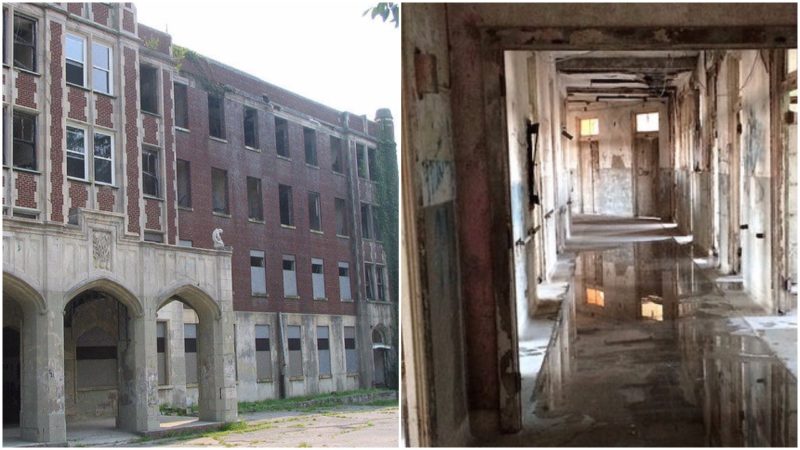Closed, abandoned, and vulnerable to vandalism, The Waverly Hills Sanatorium is located in southwestern Louisville/Jefferson County, Kentucky. It was initially opened in 1910 as a two-story hospital made to accommodate between 40 to 50 tuberculosis patients.
The need for such a hospital came as an answer to the outbreak of tuberculosis referred to as the White Plague. Major Thomas H. Hays purchased the land known as Waverly Hill in 1883 where he built the Hays’ family home.

Given that there was no school in close proximity, Hays decided that he should open a local school for his daughters to attend. Initially, it was small one-room schoolhouse on Pages Lane. Lizzie Lee Harris was the first teacher hired to work at the school.
It was Harris’ fondness for Walter Scott’s Waverley novels that inspired the name of this institution, which they called Waverley School.
Later when the Board of Tuberculosis Hospitals bought the property, they decided to keep the name, although at some point the spelling of Waverley was changed to drop the second ‘e’.

The reason behind the outbreak of tuberculosis was the wetlands along the Ohio River, which acted as a harbor for TB bacteria. In order to try to reign in the spread of the disease, a two-story wooden sanatorium was opened. It consisted of an administrative building and two open-air pavilions that were able to house 20 patients.

The Report of the Board of Tuberculosis Hospitals in 1915 stated the following:
In the early part of 1911, the city of Louisville began to make preparations to build a new Louisville City Hospital, and the hospital commissioners decided in their plans that there would be no provision made in the new City Hospital for the admission of pulmonary tuberculosis, and the Board of Tuberculosis Hospital was given $25,000 to erect a hospital for the care of advanced cases of pulmonary tuberculosis.

Later in 1912, the hospital for advanced cases opened and the additional treatment of another 40 patients was now possible. Two years later, the children’s pavilion added another 50 beds, which increased the total number of patients to 130.
The inescapable reality was that the hospital’s main structure was wooden and in a need of constant repairs. The solution to this problem was to build a new, five-story building capable of housing more than 400 patients. Its construction began in March of 1924.

This new building was ready and opened on October 17, 1926. It was fully operational until the introduction of streptomycin, a powerful antibiotic used to treat many bacterial infections that was even effective against tuberculosis.
This discovery happened in 1943, and as a result of its introduction, there was a gradual decline in the number of tuberculosis cases which meant that the need for hospitals of this kind was greatly reduced. This scientific breakthrough was the main for the closure of Waverly Hills Sanatorium in 1961.

One year later, a new institution was opened in the same buildings: the Woodhaven Geriatric Center. It served as a nursing home, primarily treating aged patients with various stages of dementia and mobility impairments, as well as people with other mental impairments.

In 1982, after 20 years of operation, the Woodhaven Geriatric Center was shut down due to patient neglect. One year later, J. Clifford Todd bought the hospital. He hired the architect Milton Thompson and gave him the task of converting the hospital to a minimum-security prison.
Because of protests from people in the local community, the developers eventually dropped this plan. There was even a plan to build a 46-meter-tall and 46-meter-wide statue of Jesus on the roof of the sanatorium and turn the hospital into a chapel. Due to insufficient funds, the project was ultimately canceled.

Once more the property changed owners and this time it was bought by Tina and Charlie Mattingly in 2001. Today, the Mattinglys hold tours of Waverly Hills and host a haunted house attraction each Halloween. All the money collected goes toward the restoration of the property.

The hospital was featured in a number of TV shows such as VH1’s Celebrity Paranormal Project, Ghost Hunters, and the British show Most Haunted.
